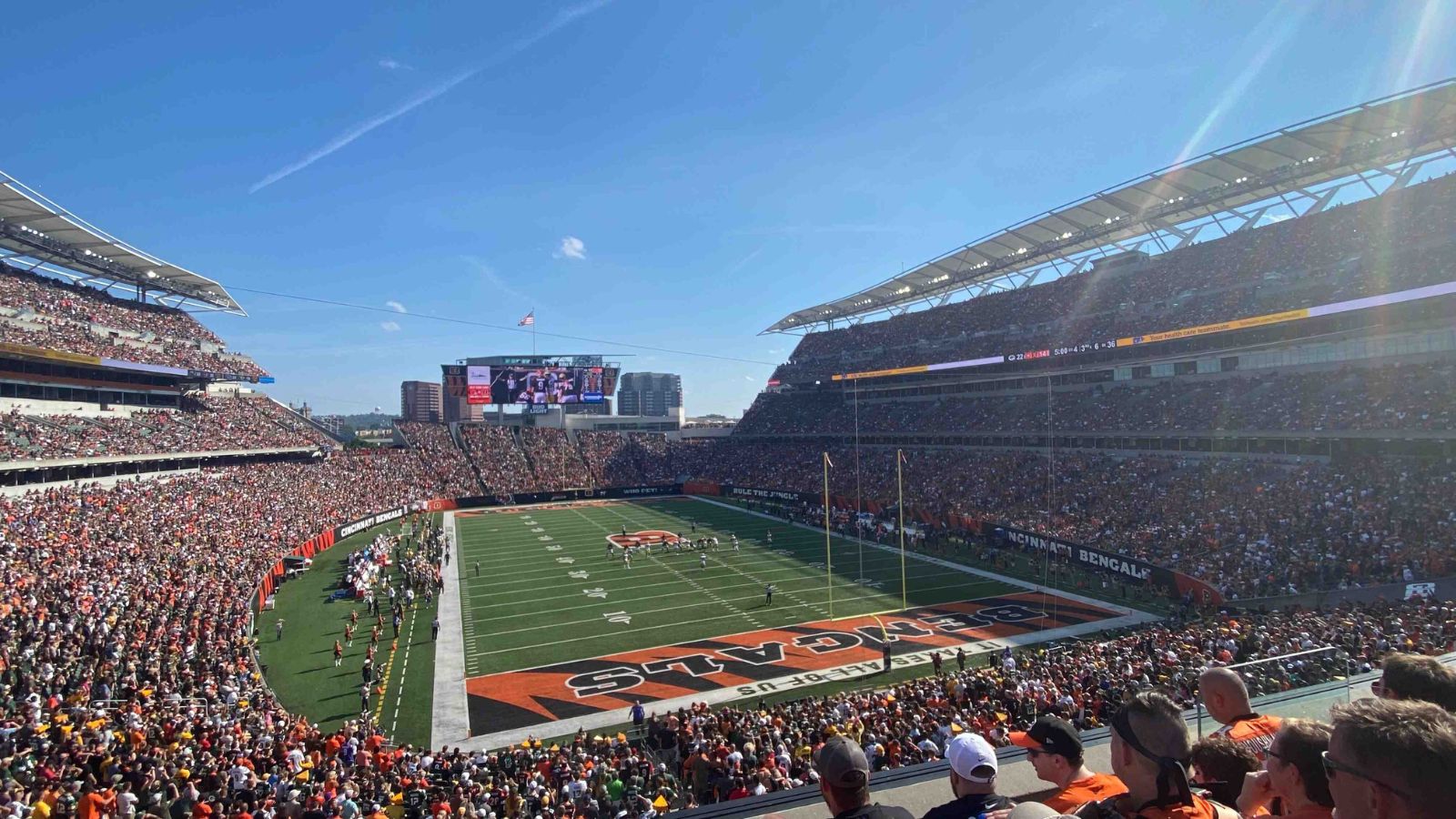After an extended back-and-forth, Hamilton County, Ohio, and the Cincinnati Bengals finalized an agreement that will keep the franchise at Paycor Stadium through at least 2036, while also upgrading the stadium.
Background and agreement details
Prior to the announcement, the future of the Bengals remaining in Cincinnati, where the team has played since its founding in 1967, was uncertain. The lease for Paycor Stadium was set to expire after the 2025 season unless a new agreement was reached by June 30, raising concerns that the franchise might look elsewhere for a new deal. However, this most recent deal secures the Bengals’ place in Cincinnati for at least the next decade. Additionally, with this new agreement, Paycor Stadium, which opened in 2000, will undergo a $470 million renovation, with Bengals’ ownership covering $120 million of that cost.
Previously, the source of the remaining $350 million in funding was unknown; however, this most recent agreement between the Bengals and Hamilton County states that this amount will be covered by tax revenue.
New lease extension includes an interesting twist
The terms of the agreement are pretty interesting. According to the term sheet published on the Hamilton County website, the initial term will be for 11 years, running from the 2025 season through the 2035 season (officially terminating in June of 2036). After that, the Bengals will have five two-year extension options if they want to continue playing at Paycor. Each two-year extension requires a 12-month notice to activate.
However, if the Bengals rank higher than 25th in team revenues in both the 2032 and 2033 seasons (the 8th and 9th year of the extension), the first two-year extension will automatically activate, keeping the team at Paycor until at least the 2037 season. After that, all remaining extension options will belong exclusively to the Bengals.
Regardless of how it plays out, by the end of the 10-year extension, Paycor Stadium will be 36 years old. And if the two sides agree to the maximum of 10 years of extensions, Paycor will be almost 50 years old by the time that extension is up.
It’s hard to imagine that the Bengals will not opt out of the deal as soon as they are able to, whether that’s after the 2035 or 2037 season. Given the new stadium deals that other teams have struck in recent years, the likelihood that the Bengals would continue to play in such an old stadium would seem remote. Stadiums of similar ages are already being replaced, with Tennessee’s new stadium costing an estimated $2.2 billion, and Cleveland’s new stadium calling for approximately $2.4 billion to replace Huntington Bank Field. Both stadiums were opened in 1999, one year before the then-named Paul Brown Stadium opened.
What is being renovated?
The upgrades to Paycor Stadium – including improvements to the scoreboard, seating, and the stadium’s infrastructure – should provide an enhanced gameday experience for fans. The previous $1.2 billion renovation plans included improvements to the stadium’s seating and other areas, as well as upgrades to the surrounding riverfront area, but those plans were scaled back to get this agreement over the finish line.
Bottom line
Bengals fans can breathe a sigh of relief. This new agreement cements their team’s place in Cincinnati for the next decade, and perhaps more. Meanwhile, for Bengals fans who own COA licenses (the Bengals’ version of seat PSLs), those rights will continue to be valid while the stadium is in use, meaning no further investment will be necessary to retain their seat rights. That’s likely different from fans in Cleveland, who will almost certainly have to purchase new PSLs for the new stadium
As for the longer-term future, whether or not the Bengals choose to remain at Paycor beyond the 2035 season remains unknown. But given the stadium’s age, it wouldn’t be surprising to see the franchise decide to build a new stadium – or relocate – by the time the 2036 or 2038 seasons roll around.




